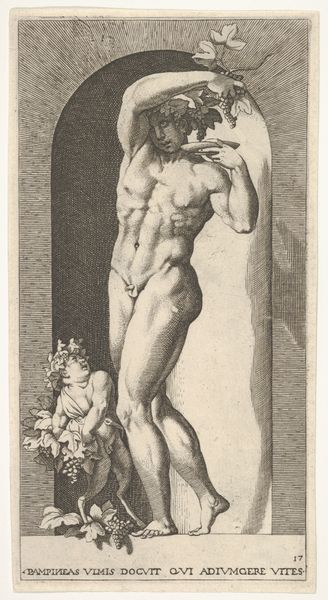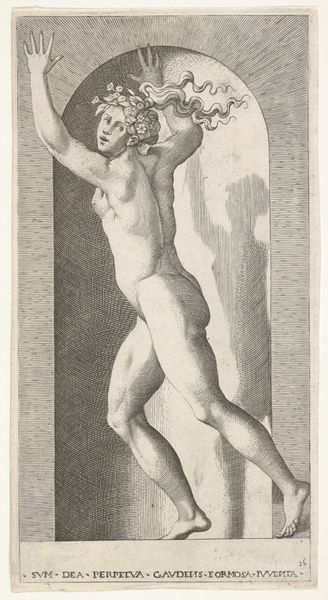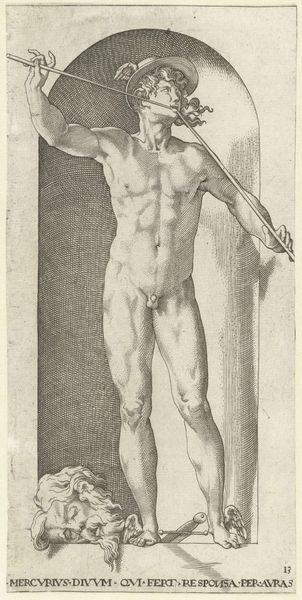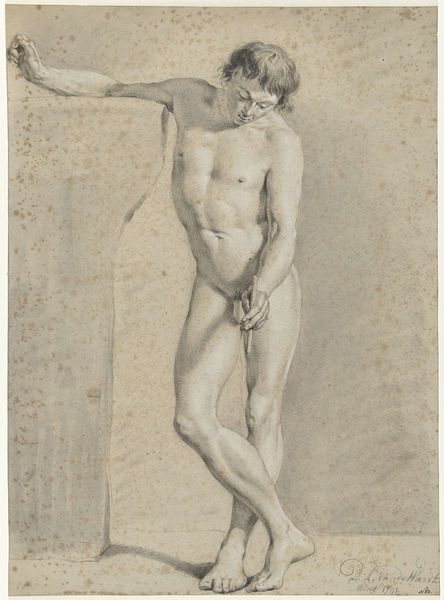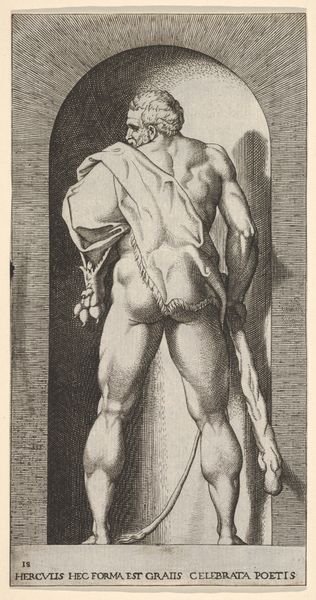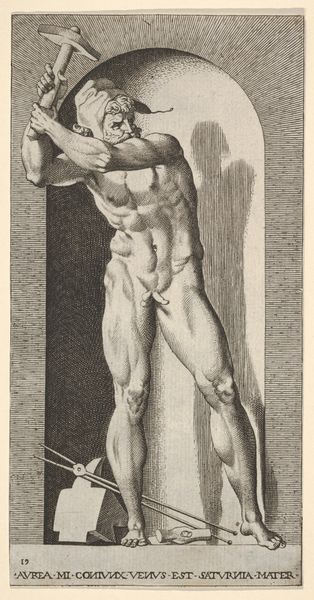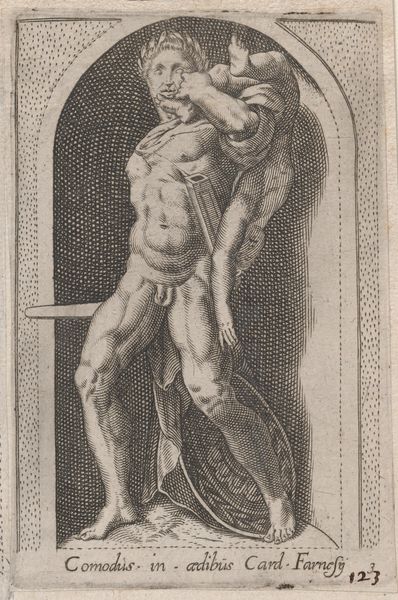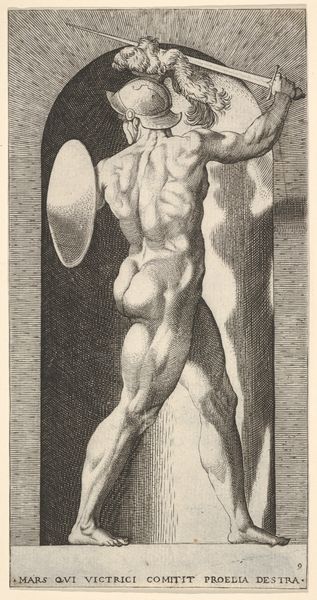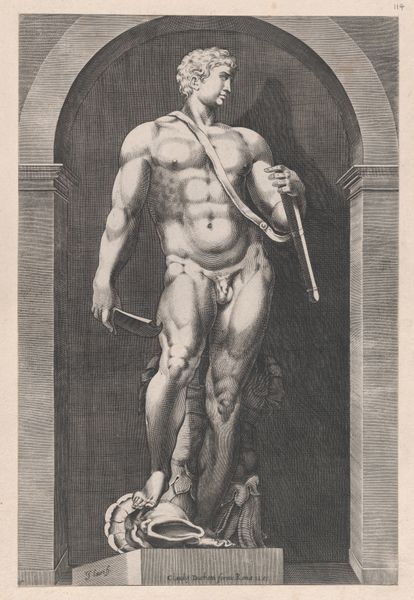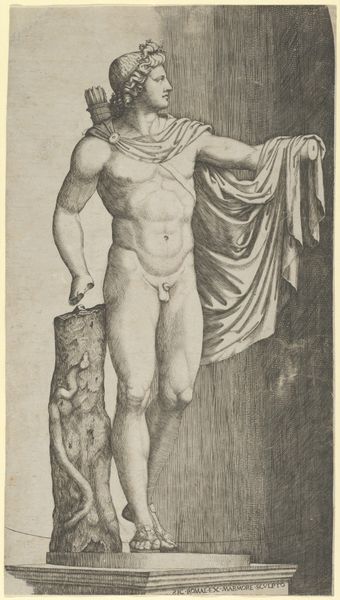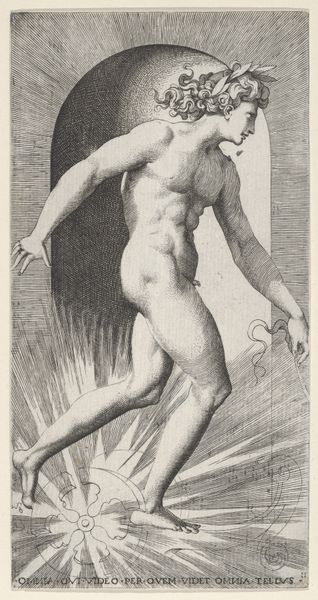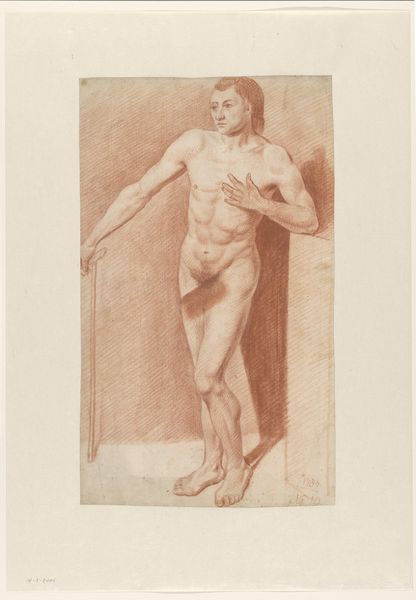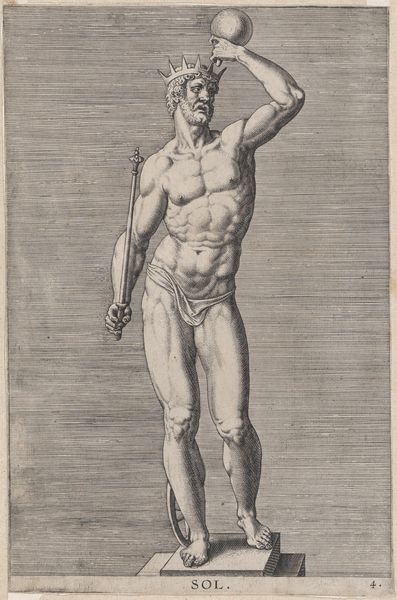
Plate 14: Mercury standing in a niche playing his pipes, with the severed head of an old man and a sword at his feet, from "Mythological Gods and Goddesses" 1526
0:00
0:00
drawing, print, engraving
#
drawing
#
allegory
# print
#
caricature
#
figuration
#
11_renaissance
#
men
#
musical-instrument
#
italian-renaissance
#
nude
#
engraving
Dimensions: Sheet: 8 3/16 × 4 3/16 in. (20.8 × 10.7 cm)
Copyright: Public Domain
Curator: Here we have Giovanni Jacopo Caraglio's "Plate 14: Mercury standing in a niche playing his pipes, with the severed head of an old man and a sword at his feet," created in 1526. Editor: My first impression is that it feels strangely balanced despite the disturbing elements. There's a stark contrast between Mercury's idealized form and the grotesque head at his feet. The linework is incredible; what's your take on its formal qualities? Curator: Indeed. Caraglio masterfully employs the medium of engraving to create tonal variation, look at the light! Note how the texture defines Mercury’s muscles and the drapery-like lines composing the shadowy niche he inhabits. The diagonal line created by the pipe guides our eye across his torso to the sword and the grimly grinning head beneath. Editor: Considering the print’s age, how do you read the decision to depict Mercury nude, in what seems like a victorious pose, over symbols of death? It is as if a clear, classical body dominates mortality. Curator: The figure is certainly standing triumphantly; Mercury seems almost untouched. Given the Renaissance interest in classical antiquity, it suggests the dominance of reason, beauty, and the renewal of the arts over death. The pipes and sword intimate communication and violence; are we to understand that they are intrinsically entwined? Editor: Perhaps. Renaissance culture itself wasn’t free from these violent conflicts; artistic patronage, such as for the Medici, could be attained via questionable means. Moreover, the nude was used as a political device throughout history. Are we viewing an objective presentation of mythology or a comment on leadership, power, and patronage? Curator: A valid interpretation. Caraglio may be exploring how mythic power translates into contemporary influence, even hinting at the dark side of Renaissance humanism. I would posit that this image reveals and celebrates the power of intellect triumphing over human limitation. Editor: I agree that it speaks to the complicated reality behind power structures, both in the Renaissance and today. Its beauty masks brutal undertones, offering a glimpse into how dominance has been attained across historical moments. Curator: It is a composition of line and form that offers a meditation on life, death, and enduring power. Editor: A disquieting yet captivating Renaissance masterpiece.
Comments
No comments
Be the first to comment and join the conversation on the ultimate creative platform.
